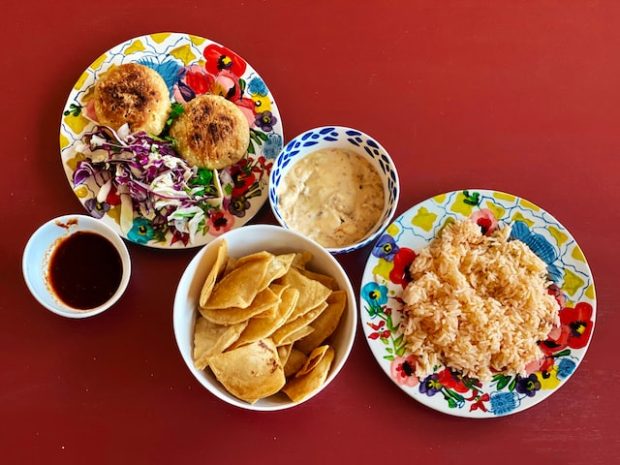If you have already tried Spanish rice and Mexican rice, you may be surprised that, when someone has invited you again to eat either of these dishes, you are served a different rice than you expected. They will tell you that what you may already know as Spanish rice is Mexican rice, or vice versa. So, which is real Spanish rice, and which is real Mexican rice?
A very common confusion
While in the rest of the world the distinction seems clear enough, in many places in the United States they call Spanish rice which is in fact Mexican rice. Why? Actually, the true origin of this confusion is not very clear.
One likely explanation is that Mexican rice has been given the name of the language spoken by Mexicans, which is, of course, the Spanish language. Seen from this point of view, the name “Spanish rice”, although not accurate, seems justifiable.
Another possible explanation is that the name is due to the misconception that all customs and traditions—including culinary ones—of Spanish-speaking countries have their origin in Spain.
Anyway, a simple exchange of names does not change the fact that, if cooked with the right ingredients and with the procedure, a rice dish can be delicious. You can easily check this out with the recipe you will find at https://successrice.com/recipes/spanish-rice/.
Original Mexican rice
Mexican rice is also called “red rice”—in Spanish arroz rojo, as Mexicans call it. That name is because Mexican rice is cooked with tomato juice or tomato paste, which gives the grains a very attractive reddish color when they are ready to eat. Some salsa, i.e. tomato sauce with spices, can also be used.
Moreover, Mexican rice is cooked with meat broth—beef or chicken—and chilies. It usually has a touch of cumin, too.
Original Spanish rice
Original Spanish rice does not contain tomatoes. Its characteristic yellow color and flavor is due to saffron, a highly prized spice that is only grown in a few places in the world. One of these places is Spain.
Another characteristic of Spanish rice is that it is cooked with garlic and often with a touch of pepper, instead of chili peppers and onions. The oil used in Spanish rice is generally olive oil.
As a side dish and as a main dish
Despite their differences, both Spanish and Mexican rice can be served as a side dish or as a main dish.
Spanish rice is an excellent side dish for roast beef, pork or chicken. It also goes very well with fish, whether from the sea or freshwater.
Mexican rice goes very well with meat or fish stews, and can even serve as an accompaniment to tacos, enchiladas and quesadillas.
As a main dish, Mexican rice usually contains pieces of beef or chicken. It can also contain various vegetables, especially corn, beans and ejotes-Mexican green beans.
Spanish rice, when served as a main dish, is usually mixed with pork or sausages such as the famous Spanish chorizo. It can also contains seafood, especially in the coastal provinces. The most frequent vegetables with which it is mixed are carrots, peas, and bell peppers.
Spanish-Mexican fusion
Gastronomic imagination knows no bounds. Thus, several recipes have appeared lately which are evidently fusions of Spanish rice and Mexican rice, because of the ingredients called for. Perhaps this is another reason why their names have been exchanged, or why the confusion has continued despite the fact that we live in the so-called Information Age.
Thus, we can find Mexican rice recipes that have sausages or garlic as ingredients. At the same time, we can read several Spanish rice recipes that call for chopped tomatoes or meat broth. Or Mexican rice made with seafood, and Spanish rice seasoned with chili. Or Mexican rice made with olive oil, and Spanish rice prepared with corn oil.
In fact, when it comes to cooking or preparing a dish with taste and imagination, whether from local or international cuisine, it is not a matter of sticking strictly to names, history, or tradition. The important thing is to get a well-prepared, good-looking and, above all, flavorful dish, so that it pleases both the cook and the diners. As the saying goes, à chacun son goût, or “there is no accounting for taste.”
Read More:


